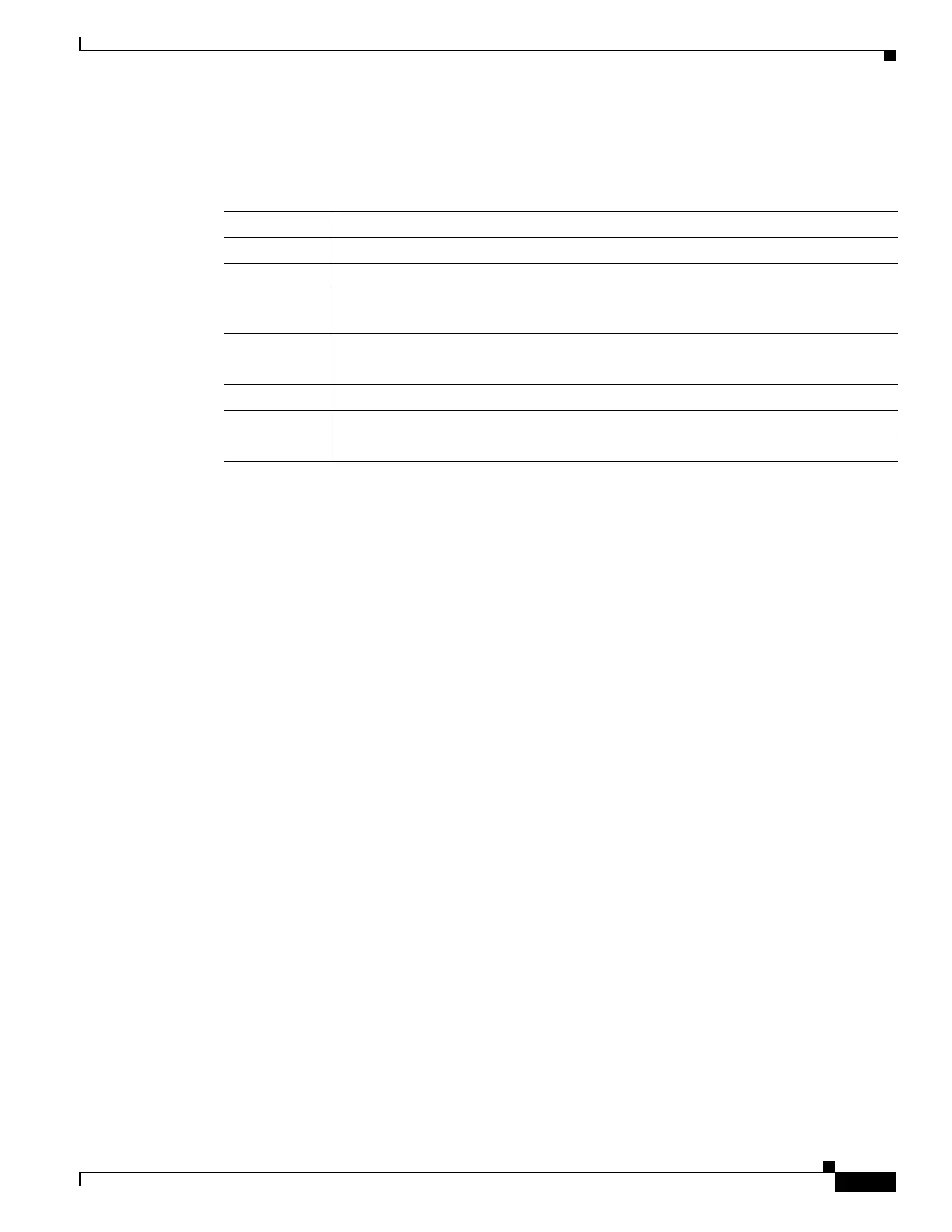34-13
Cisco IE 3000 Switch Software Configuration Guide
OL-13018-01
Chapter 34 Troubleshooting
Using TDR
The display shows the hop count, the IP address of the router, and the round-trip time in milliseconds
for each of the three probes that are sent.
To end a trace in progress, enter the escape sequence (Ctrl-^ X by default). Simultaneously press and
release the Ctrl, Shift, and 6 keys and then press the X key.
Using TDR
These sections contain this information:
• Understanding TDR, page 34-13
• Running TDR and Displaying the Results, page 34-14
Understanding TDR
You can use the Time Domain Reflector (TDR) feature to diagnose and resolve cabling problems. When
running TDR, a local device sends a signal through a cable and compares the reflected signal to the initial
signal.
TDR is supported only on 10/100 and 10/100/1000 copper Ethernet ports. It is not supported on SFP
module ports.
TDR can detect these cabling problems:
• Open, broken, or cut twisted-pair wires—The wires are not connected to the wires from the remote
device.
• Shorted twisted-pair wires—The wires are touching each other or the wires from the remote device.
For example, a shorted twisted pair can occur if one wire of the twisted pair is soldered to the other
wire.
If one of the twisted-pair wires is open, TDR can find the length at which the wire is open.
Use TDR to diagnose and resolve cabling problems in these situations:
• Replacing a switch
• Setting up a wiring closet
Ta b l e 34-2 Traceroute Output Display Characters
Character Description
* The probe timed out.
? Unknown packet type.
A Administratively unreachable. Usually, this output means that an access list is
blocking traffic.
H Host unreachable.
N Network unreachable.
P Protocol unreachable.
Q Source quench.
U Port unreachable.

